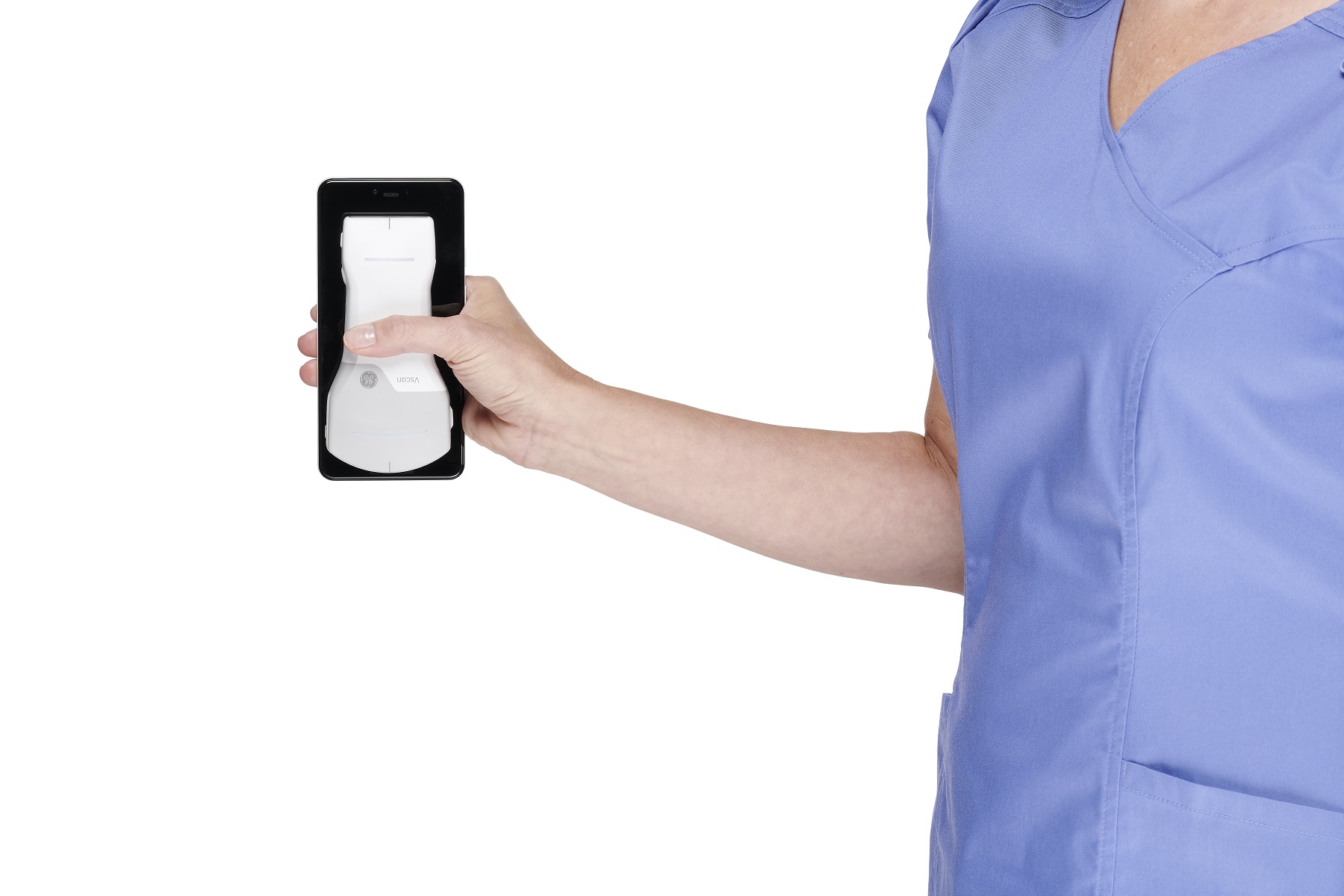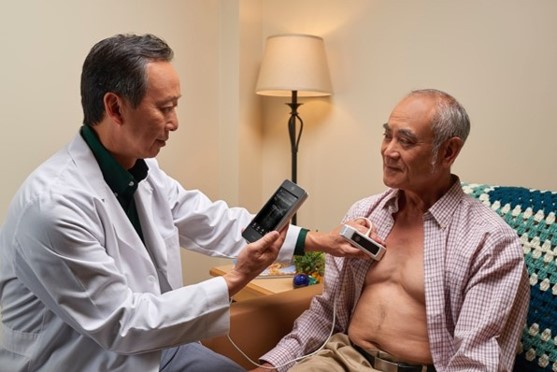Why handheld ultrasound?
Transforming the possibilities of ultrasound.

Accelerate treatment decisions.
Handheld ultrasound enables you to make quick diagnostic decisions to help triage patients quickly.
Handheld ultrasound enables diagnostic assessments.Handheld ultrasound enables diagnosis at the point of care, helping healthcare professionals avoid further investigations.
The power to diagnose and act in the palm of your hand. Handheld ultrasound fits in your pocket, making it extremely portable and convenient.
Increase patient engagement and follow-through.Handheld ultrasound accelerates decisions to help reduce patient wait times, travel burden, and costs.
Whether in a physician’s office or in an air ambulance… Handheld ultrasound enables you to have diagnostic capabilities whereverl you need them.
Achieve a flexible wireless workflow. With handheld ultrasound at the bedside, you can improve patient management through streamlined decisions.

Use of handheld ultrasound as part of a physical exam may improve patient care.
Handheld ultrasound is valuable in facilitating fast decisions, enabling clinicians to see what they could only feel or hear prior to the ultrasound exam.
Delivering fast information for decision making, handheld ultrasound helps clinicians optimize healthcare operations, services, and experience.